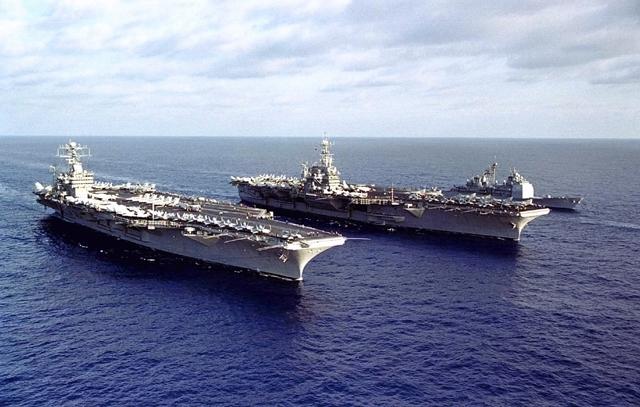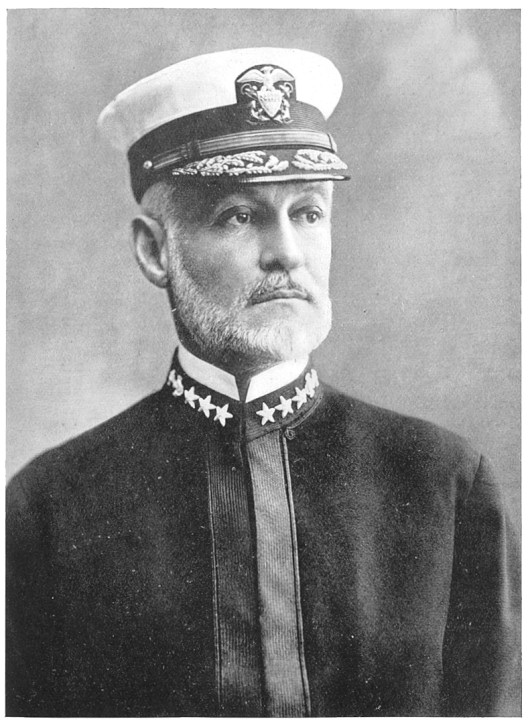|
VFA-195
Strike Fighter Squadron 195 (VFA-195), also known as the Dambusters, is a United States Navy F/A-18E Super Hornet fighter squadron stationed at Marine Corps Air Station Iwakuni, Japan. They are a part of Carrier Air Wing Five (CVW-5) and their tail code is ''NF''. Their radio callsign is "Chippy". Squadron insignia and nickname The squadron, originally known as the ''Tigers'', had its first insignia approved by Chief of Naval Operations (CNO) on 4 March 1944, consisting of a lion cub riding a torpedo. Bob Burns gave the squadron a lion cub. On the patch the cub is holding the musical "bazooka" that Burns used in his act, while riding a torpedo. The lion went to the Los Angeles Zoo. A new design replaced the cub with a tiger and parrot on the torpedo, and was approved on 18 April 1949. Sometime in the 1950s, the squadron adopted a shield insignia that featured an eagle's head and a torpedo. On 1 May 1951, squadron aircraft disabled the heavily defended Hwacheon Dam held by Nor ... [...More Info...] [...Related Items...] OR: [Wikipedia] [Google] [Baidu] |
McDonnell Douglas F/A-18 Hornet
The McDonnell Douglas F/A-18 Hornet is an all-weather supersonic, twinjet, twin-engine, carrier-based aircraft, carrier-capable, Multirole combat aircraft, multirole combat aircraft, designed as both a Fighter aircraft, fighter and attack aircraft (hence the F/A 1962 United States Tri-Service aircraft designation system, designation). Designed by McDonnell Douglas and Northrop Corporation, Northrop, the F/A-18 was derived from the latter's YF-17 in the 1970s for use by the United States Navy and United States Marine Corps, Marine Corps. The Hornet is also used by the air forces of several other nations, and formerly by the U.S. Navy's Flight Demonstration Squadron, the Blue Angels. The F/A-18 was designed to be a highly versatile aircraft due to its avionics, glass cockpit, cockpit displays, and excellent aerodynamic characteristics, with the ability to carry a wide variety of weapons. The aircraft can perform escort fighter, fighter escort, fleet air defense, suppression of en ... [...More Info...] [...Related Items...] OR: [Wikipedia] [Google] [Baidu] |
CVW-5 Emblem
Carrier Air Wing Five (CVW-5) is a United States Navy aircraft carrier air wing based at Marine Corps Air Station Iwakuni. The air wing is attached to the aircraft carrier . It was initially formed in 1943. It has participated in the Second World War, the Korean War, the Gulf War, Operation Southern Watch, the War in Afghanistan (2001–present), War in Afghanistan, and the War in Iraq. The wing's officially stated mission is 'To conduct carrier air warfare operations and assist in the planning, control, coordination and integration of seven air wing squadrons in support of carrier air warfare including; Interception and destruction of enemy aircraft and missiles in all-weather conditions to establish and maintain local air superiority. All-weather offensive air-to-surface attacks, Detection, localization, and destruction of enemy ships and submarines to establish and maintain local sea control. Aerial photographic, sighting, and electronic intelligence for naval and joint operati ... [...More Info...] [...Related Items...] OR: [Wikipedia] [Google] [Baidu] |
MCAS Iwakuni
is a joint Japan Maritime Self-Defense Forces and United States Marine Corps air station located in the Nishiki river delta, southeast of Iwakuni Station in the city of Iwakuni, Yamaguchi Prefecture, Japan. History The Japanese government bought a large portion of what is today MCAS Iwakuni in 1938, with the view of establishing a naval air station. They commissioned the new base on 8 July 1940. When World War II started, the Iwakuni Air Station was used as a training and defense base. The station housed 96 trainers and 150 Zero fighter planes on the airstrip. In September 1943, a branch of the Etajima Naval Academy was established here, with approximately 1,000 cadets undergoing training in the Basic, Junior, and Senior Officer's schools at any one time. American B-29's bombed Iwakuni in May and August 1945, concentrating on the oil refinery and Rail Transport Office or train station areas. The last air raid took place just a day before the war was brought to a close. Th ... [...More Info...] [...Related Items...] OR: [Wikipedia] [Google] [Baidu] |
Marine Corps Air Station Iwakuni
is a joint Japan Maritime Self-Defense Forces and United States Marine Corps air station located in the Nishiki River, Nishiki river delta, southeast of Iwakuni Station in the Municipality of Japan, city of Iwakuni, Yamaguchi Prefecture, Japan. History The Japanese government bought a large portion of what is today MCAS Iwakuni in 1938, with the view of establishing a naval air station. They commissioned the new base on 8 July 1940. When World War II started, the Iwakuni Air Station was used as a training and defense base. The station housed 96 trainers and 150 Zero fighter planes on the airstrip. In September 1943, a branch of the Imperial Japanese Naval Academy, Etajima Naval Academy was established here, with approximately 1,000 cadets undergoing training in the Basic, Junior, and Senior Officer's schools at any one time. American B-29 Superfortress, B-29's bombed Iwakuni in May and August 1945, concentrating on the oil refinery and Rail Transport Office or train station are ... [...More Info...] [...Related Items...] OR: [Wikipedia] [Google] [Baidu] |
Third Taiwan Strait Crisis
The Third Taiwan Strait Crisis, also called the 1995–1996 Taiwan Strait Crisis, or the 1996 Taiwan Strait Crisis, was the effect of a series of missile tests conducted by the People's Republic of China (PRC) in the waters surrounding Taiwan, including the Taiwan Strait, from 21 July 1995 to 23 March 1996. The first set of missiles fired in mid-to-late 1995 was allegedly intended to send a strong signal to the Republic of China government under President Lee Teng-hui, who had been seen as "moving its foreign policy away from the One-China policy", as claimed by PRC. The second set of missiles was fired in early 1996, allegedly intending to intimidate the Taiwanese electorate in the run-up to the 1996 presidential election. Lee's 1995 visit to Cornell The crisis began when President Lee Teng-hui accepted an invitation from his alma mater, Cornell University, to deliver a speech on "Taiwan's Democratization Experience". Seeking to diplomatically isolate the Republic of Chi ... [...More Info...] [...Related Items...] OR: [Wikipedia] [Google] [Baidu] |
Boeing F/A-18E/F Super Hornet
The Boeing F/A-18E and F/A-18F Super Hornet are a series of American supersonic twinjet, twin-engine, Carrier-based aircraft, carrier-capable, Multirole combat aircraft, multirole fighter aircraft derived from the McDonnell Douglas F/A-18 Hornet. The Super Hornet is in service with the armed forces of the United States, Australia, and Kuwait. The F/A-18E single-seat and F tandem-seat variants are larger and more advanced versions of the F/A-18C and D Hornet, respectively. A strike fighter capable of air-to-air and air-to-ground/surface missions, the Super Hornet has an internal 20mm M61 Vulcan, M61A2 rotary cannon and can carry air-to-air missiles, air-to-surface missiles, and a variety of other weapons. Additional fuel can be carried in up to five external fuel tanks and the aircraft can be configured as an airborne tanker by adding an external Aerial refueling, air-to-air refueling system. Designed and initially produced by McDonnell Douglas, the Super Hornet first flew in ... [...More Info...] [...Related Items...] OR: [Wikipedia] [Google] [Baidu] |
Hwacheon Dam
Hwacheon Dam () is a concrete gravity dam on the North Han River (Korea), Han (Pukhan) River in Hwacheon County, Gangwon-do (South Korea), Gangwon-do Province, South Korea. The dam was completed in 1944 as a primary source of electricity in southern Korea. It was the focal point of a raid during the Korean War and also provides flood protection from North Korea's Imnam Dam upstream. Background The dam was constructed by the Japanese during their Korea under Japanese rule#During World War II, occupation of Korea in World War II. The Han River Hydroelectric Company began construction in July 1939 and the dam was complete in October 1944. Several months prior in May, the first generator of the power plant was operational, the second that October. The third generator was operational in 1957 and the last of the four generators was installed in 1968. Before the upstream Peace Dam was completed in 2005, the Hwacheon Dam served as the first line-of-defense for a collapse or excess discha ... [...More Info...] [...Related Items...] OR: [Wikipedia] [Google] [Baidu] |
Attack On The Sui-ho Dam
The attack on the Sui-ho Dam was the collective name for a series of mass air attacks during the Korean War on thirteen hydroelectric generating facilities by United Nations Command air forces as part of the North Korean bombing campaign on June 23–24 and June 26–27, 1952. Primarily targeting the hydroelectric complex associated with the Sui-ho Dam in North Korea, the attacks were intended to apply political pressure at the stalled truce negotiations at Panmunjeom. Heavily defended by Soviet, Chinese and North Korean Air Forces, as well as major anti-aircraft guns, the hydroelectric targets were subjected to attacks totaling 1,514 sorties. These were conducted jointly by fighters and fighter-bombers of the United States Air Force, US Navy, US Marine Corps, and South African Air Force, the first time in 21 months that the separate air arms had worked together on a massive scale. The attack on the facilities was followed seventeen days later by another series of large-sca ... [...More Info...] [...Related Items...] OR: [Wikipedia] [Google] [Baidu] |
LTV A-7 Corsair II
The LTV A-7 Corsair II is an American carrier-capable subsonic light attack aircraft designed and manufactured by Ling-Temco-Vought (LTV). The A-7 was developed during the early 1960s as replacement for the Douglas A-4 Skyhawk. Its design was derived from the Vought F-8 Crusader; in comparison with the F-8, the A-7 is both smaller and restricted to subsonic speeds, its airframe being simpler and cheaper to produce. Following a competitive bid by Vought in response to the United States Navy's (USN) ''VAL'' (Heavier-than-air, Attack, Light) requirement, an initial contract for the type was issued on 8 February 1964. Development was rapid, first flying on 26 September 1965 and entering squadron service with the USN on 1 February 1967; by the end of that year, A-7s were being deployed overseas for the Vietnam War. Initially adopted by USN, the A-7 proved attractive to other services, soon being adopted by the United States Air Force (USAF) and the Air National Guard (ANG) to replac ... [...More Info...] [...Related Items...] OR: [Wikipedia] [Google] [Baidu] |
Bob Burns (comedian)
Robin "Bob" Burns (August 2, 1890 – February 2, 1956) was an American musical comedian, who appeared on radio and in movies from 1930 to 1947. Burns played a novelty musical instrument of his own invention, which he called a "bazooka". During World War II, the US Army's handheld anti-tank rocket launcher was nicknamed "bazooka" after Burns's instrument, and the term remains current into the 21st century as generic name for some shoulder-fired rocket launchers. Early years He was born Robin Burn in Greenwood, Arkansas. When he was three years old, his family moved to Van Buren, Arkansas. As a boy, Burns played trombone and cornet in the town's "Queen City Silver Cornet Band". At 13, he formed his own string band.Bob Burns hometown tribute Practicing in the back of Hayman's Plumbing Shop one night, he picked up a length ... [...More Info...] [...Related Items...] OR: [Wikipedia] [Google] [Baidu] |
Chief Of Naval Operations
The chief of naval operations (CNO) is the highest-ranking officer of the United States Navy. The position is a statutory office () held by an Admiral (United States), admiral who is a military adviser and deputy to the United States Secretary of the Navy, secretary of the Navy. The CNO is also a member of the Joint Chiefs of Staff () and in this capacity, a military adviser to the United States National Security Council, National Security Council, the United States Homeland Security Council, Homeland Security Council, the United States Secretary of Defense, secretary of defense, and the President of the United States, president. Despite the title, the CNO does not have operational command authority over naval forces. The CNO is an administrative position based in the Pentagon, and exercises supervision of Navy organizations as the designee of the secretary of the Navy. Operational command of naval forces falls within the purview of the Unified combatant command, combatant comma ... [...More Info...] [...Related Items...] OR: [Wikipedia] [Google] [Baidu] |









